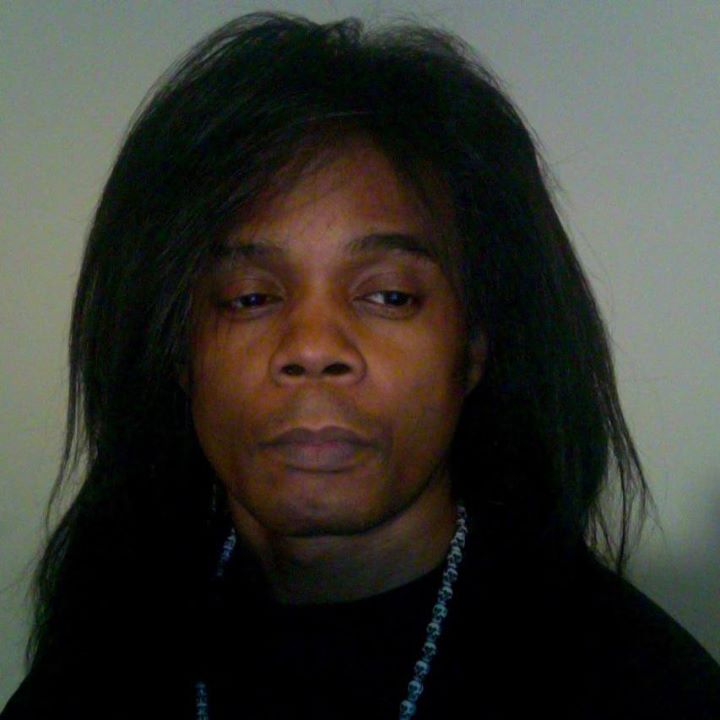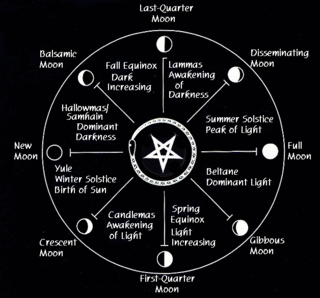

"Darken your room, shut the door, empty your mind. Yet you are still in great company - the Numen and your Genius with all their media, and your host of elementals and ghosts of your dead loves- are there! They need no light by which to see, no words to speak, no motive to enact except through your own purely formed desire" -Austin Osman Spare, The Logomachy of Zos

Witches, and some Neopagan groups which are influenced by The Craft, observe eight festivals which they call "sabbats". Four of these fall on the solstices and equinoxes and are known as "quarter days or Lesser Sabbats". The other four fall (approximately) midway between these and are commonly known as "cross-quarter days," "fire festivals," or Greater Sabbats. The "quarter days" are loosely based or named after the Germanic festivals, and the "cross-quarter days" are similarly inspired by the Gaelic fire festivals. However, modern interpretations vary widely, so Witches may celebrate and conceptualize these festivals in very different ways, often having little in common with the cultural festivals outside of the adopted name.
The system of eight yearly festivals held on these dates is unknown in older pagan calendars, and originated in the modern Witchcraft. The eight major festivals (or "sabbats") are distinct from the "esbats", which are additional meetings, usually smaller celebrations or coven meetings, held on full or new moons
WINTER SOLSTICE December 21st:The celebration of the winter solstice, the shortest day of the year. It is the celebration rebirth of the Sun, which is the promise of spring and life even on this the darkest day. Therefore some consider this the new year. The burning of the log is to give the Sun strength. Mumming (plays) such as "St. George" is a Pagan survival , it represents the rebirth of the God. Wassailing or is also a Pagan custom. The Roman festival of the Solstice was Saturnalia, which lasted from December 17th to the 24th.
IMBOLC - Cross-quarter day- February 2: February is a purifactory month, bonfires are held now. In the Christian calendar this festival was converted to the Feast of the Purification of the Virgin (Mary). Candles for the following year were purified in the western church - therefore we get the name Candlemas.
VERNAL EQUINOX March 20 / 21: The celebration of the Vernal (Spring) Equinox. Day & Night are equal length. It is a time for planting and celebrating the first signs of fertility and rebirth. Symbols of Ostara like eggs, chicks, and rabbits have been adopted by Christians in their Easter holiday. The word, Easter is from the goddess Eostra, Ishtar or Astarte.
BELTANE - Cross-quarter day - May 1: May Day.Beltane celebrates the Marriage of the Goddess and the God,the goddess is thought to conceive the Divine Child at this time,to which she will give birth to at Yule. The maypole dance is symbolic of the union of the goddess and the god . Pagan Handfastings occur at this time.
SUMMER SOLSTICE June 21: The Summer Solstice a celebration in honor of the Sun-God . Traditional Pagan activities of Midsummer is to leap across bonfires to promote fertility of animals and crops.
LUGHNASADH - Cross-quarter day - August 1: Also known as Lammas, this is the first of the three Harvest festivals. The first fruits of the annual harvest are reaped, and the days grow shorter
AUTUMN EQUINOX September 21: The Autumnal Equinox, is the second of the Harvest holidays. Mabon is a time to recognize what we have and to begin preparing for the coming winter.
SAMHAIN - Cross-quarter day - October 31/ November 1 Death, the third of the Harvest holidays, the ending of the cycle, death, but with the hope of rebirth and the New Year.The traditional time for the annual slaughter to ensure food throughout the winter months. Take this time to remember departed ones. In some traditions the end of the year . The separation between this physical world and the spiritworld is thin. Halloween customs are a part of this element of death, the thin line at this cycle and remembering the dead and the hopes of rebirth. On this night Magick is more powerful .

Witches also celibrate esbats. An Esbat is a ritual observance of the full moon within Witchcraft and other forms of Neopaganism. Some groups extend these celebrations to include the dark moon, or even the first and last quarters. Traditionally, the Sabbats are times of celebration, while magical work is done at the esbats.
There are thirteen canonical full moons each year, although some years will have only twelve, because a synodic lunar month is more than twenty-eight days long (actually about 29½ days). A "blue moon" is popularly defined as the second full moon in a calendar month, although some define it as the second full moon while the sun is in one sign of the Zodiac. The original meaning of blue moon was the third full moon in a season when there were four Full Moons in that season.
The Babylonians considered the new moon to be the time when the Goddess was menstruating, and it was bad luck to do work on that day. In Jewish culture, this is the first day of the month, called Rosh Chodesh, and is still observed by some as a holiday for women.
The term esbat is probably a recent adoption, dating to the writings of Margaret Murray. It is derived from French esbat (modern ébat), meaning roughly "frolic, romp", with some sexual connotations. This term was used during the European witch trials to describe the supposed behavior of witches engaging in Devil worship, and it has been claimed that Murray was misled by the word's coincidental resemblance to the word sabbat.